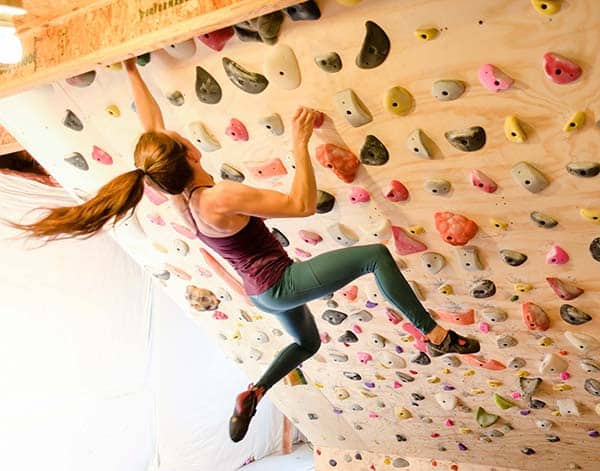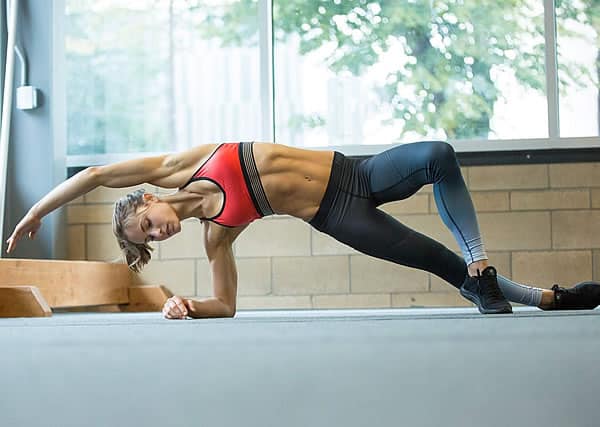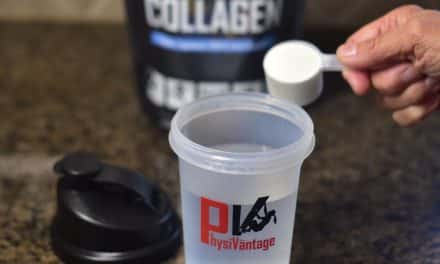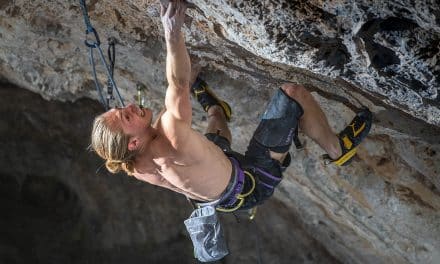Ever wonder how rock climbing’s top athletes fuel their bodies?
To perform at a high level consistently attention to diet and nutrition is crucial. The foods and beverages you consume play a primary role in determining your mental acuity, physical energy, and ability to recover from vigorous training or climbing. Therefore, a thoughtfully designed diet will provide a noticeable edge in performance.
We queried a few PhysiVāntage pros to learn their dietary preferences and habits for “game day” and beyond.
What does your overall diet normally consist of?
When we asked our athletes what their overall diet normally consists of, we received a variety of responses, with protein being a common denominator. Yes – athletes have a greater daily protein requirement than sedentary people, but there is no single perfect diet for climbers, just as there is no single perfect training program. While Lisa Chulich ordinarily eats unpackaged, pure food based around greens, veggies, and pasture-raised proteins, Jimmy Webb’s diet normally consists of “pizza and wine.” They are both highly accomplished climbers whose bodies require different types of fuel to perform at their best.
Paige Claassen said, I eat everything! I pay most attention to consuming enough protein, and then fill in with healthy fats and carbs. I don’t limit any particular foods, and I love baking and eating sweets. I find I perform best when I’m happy and giving my body what it craves. If I listen to what my system needs, that’s normally the most successful option for me.

Paige Claassen training at home. Photo: Arjan de Kock.
If you’re vegetarian, like Jonathan Siegrist, consider some of his favorites to fuel your next training or projecting session. His diet consists primarily of vegetables, bread, “or some yummy carb like rice.” “…I get protein mostly from eggs, PowerPlex, and occasionally sardines (I just reintroduced some fish into my diet but otherwise I am totally vegetarian). Also, fruit! And of course, some junk food.”
Everyone’s body responds differently to certain foods and fortunately, performance nutrition is not that complex of a subject. If you make sensible food choices, eat moderately, and avoid excessive amounts of sugar, alcohol, and unhealthy fats, then you’ll be eating more healthfully than most folks.
Our Athletes’ Go-To Food Choices:
- Paige: “Breakfast is almost always pancakes or waffles, so heavy on carbs and fat (lots of butter!). Lunch is normally whatever I can throw together, but often toast with eggs and avocado, maybe a smoothie as well with fruit and veggies in it. In the afternoon or early evening, I’ll drink PhysiVāntage Weapons Grade Whey + Supercharged collagen, normally mixed with water. And we almost always have cheese and crackers and wine before dinner. For dinner, I love to cook, so I make something new most nights. We get our meat (chicken, beef, and pork) from a local farm and eat some form of meat almost every night with a carb (rice, pasta, or potatoes) and veggies. We eat a lot of homemade pizza :).
- Jonathan: “Breakfast is normally eggs with some vegetables and some carbs like toast or a bagel. Lunch varies a lot based on climbing goals, rest days, etc. Sometimes it is several smaller meals and snacks and other times it is a proper meal. For dinner, my girlfriend Shaina cooks incredible Vegan meals, typically potatoes, rice, or noodles with tofu and tons of vegetables with a delicious sauce. Something like that.”
- Jimmy: “Breakfast I usually make oats with fruit or peanut butter and mix in some PhysiVantage collagen. Lunch I typically eat cliff bars while I’m out at the crag. Dinners I bounce back and forth between a few of my staples: homemade pizzas, salmon with sweet potatoes and veggies, burgers, and quinoa bowls are just a few of my favorites.
- Lisa: “Mornings are focused on hydration: Lemon (from the garden) cayenne in chilled water then Chaga or Reishi + cocoa + spices in a hot drink. Some days, its homemade, rich pasture raised bone broth, and more water and herbal tea. I then usually have a salad with healthy fats (avo, cocoa nibs, coconut, sprouted nuts, or egg yolk) and some protein.”“After doing a 20 min morning Pilates-style flow, I then have either a little more protein or some cooked veggies, maybe with a piece of dehydrated fruit or honey + Sendure X or Crush on my way to my first climbing or training session of the day. Mid-day consists of electrolyte rich veggies like cucumbers. At the end of the day, I then, again, focus first on hydration, then refueling. This is either greens and light protein (ideally fish or eggs) or a ton of roasted vegetables.”

Jonathan Siegrist working toward the FA of 100 Proof (5.15a). Photo: Niles Liles.
Dieting for Projects
Much stigma exists around performance dieting. While it’s unhealthy to starve yourself ‘for the send,’ there are measures you can take to alter your diet in a healthy way and prepare your body to perform at your limit.
Some athletes choose to substitute things like excess sweets or alcohol with healthy fats or protein to prepare their body for peak performance. “There was a project a few years ago (Odin’s Eye, in Flatanger Norway), which was steeper and more powerful than anything I’d tried before. I knew I needed to build lean muscle, so that’s when I started eating wayyyy more protein than ever before. Since then, I’ve stuck to that high protein, high fat diet and it’s worked really well for me,” explained Paige. Siegrist, on the other hand, primarily cuts back on sugar, alcohol, and other inflammatory foods when preparing for a project.
As nutrition science and diet ‘trends’ are constantly changing, it’s important to understand that there is no ‘right’ or ‘wrong’ regimen to follow. Take note of how your body responds to certain foods — genetics are a real factor! — and tailor your diet to what your body needs to thrive.
Favorite Nutritional Supplements:
While whole foods should comprise the bulk of your diet, supplements can be helpful to fill nutritional gaps. Consuming a high-quality whey or plant-based protein is most common among elite athletes wanting to support recovery and strength gains. Other supplements like Endure X, caffeine, beta alanine, among others, may offer a performance edge.
- Lisa: “I’ve been really impressed with Sendure X! I also appreciate the quality of PhysiVāntage Supercharged Collagen.”
- Jimmy: “Probably the Sendure X. And, it tastes great!”
- Jonathan: “PowerPlex! I have a PowerPlex vegan protein shake after climbing or around middle of the day on rest days. I have Sendure X every climbing day a little before climbing and then throughout the day I sip on it.”
- Paige: “Supercharged Collagen, chocolate flavor. Gotta keep these joints happy, and as I’ve gotten older (I’m 30, ha!) I’ve noticed my body appreciates the boost for recovery.”
Related Articles:
- Personalized Nutrition for Training and Performance
- The Skinny on Optimizing Body Composition to Improve Climbing Performance
Copyright © 2000–2024 All Rights Reserved | Hörst Training LLC
Sponsored Ad






![🚨New Training For Climbing podcast drop! [**Link in bio.**]
This a two-part deep dive into designing a comprehensive, long-term systems approach to training. Coach @eric_horst unpacks—in rich detail—how systems actually function, and he highlights how transformative climbers throughout history “shake up the box” with innovative, highly effective methods to achieve big goals and push the boundaries of our sport.
In Part 1 (#122), Eric blends a concise climbing history lesson with an engineer-like breakdown of how intelligent systems operate. Part 2 (#123) of this series will deliver the actionable strategies you can use to build a personalized, high-performance training system for this winter…and for many seasons to come.
Eric emphasizes that as climbers progress beyond the beginner stage, climbing and training grow increasingly complex—requiring intentional, organized, and year-round development of strength, technique, mental skills, recovery habits, nutrition, and lifestyle management. Rather than ad-lib sessions or singular-focus programs (like only training strength), climbers need a comprehensive system fine-tuned daily and seasonally.
This is an entertaining and thought-provoking episode—so lean in, listen closely, and get ready to feel inspired, challenged, and equipped to level-up your modus operandi at the crag, in the gym, at home, and in everything you do! Listen on Apple Podcasts, Spotify, or online using the web player below.
#climbingtraining #bouldering #indoorclimbing #climbing #climbingpodcast #erichorst #trainingforclimbing @lasportivana @physivantage](https://trainingforclimbing.com/wp-content/plugins/instagram-feed/img/placeholder.png)


